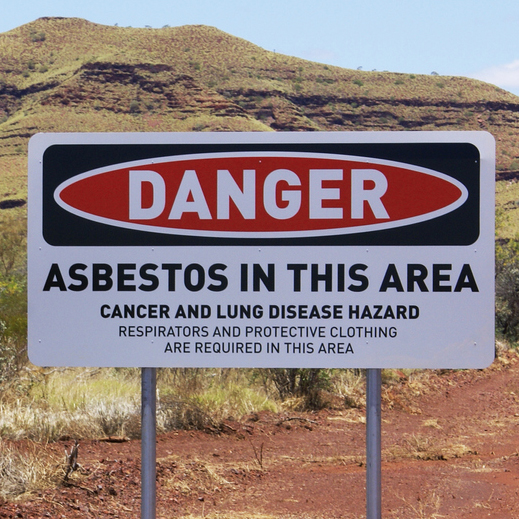
Asbestos is a word that strikes fear in the general public – and rightly so, as its use in mining and construction has led to thousands of deaths from lung disease and counts as one of the great public health disasters of the modern era.
Not so many people know that asbestos is a mineral that occurs naturally in the environment, in rocks and soil, where it carries a tiny fraction of the health risk compared with its industrial use. Over the past couple of years, the NSW government has been releasing maps which identify areas where people are most likely to come across naturally occurring asbestos. As these maps are released, the public will become increasingly aware of its existence, which may cause concern and anxiety.
What is the best way of communicating about health issues such as naturally occurring asbestos, where the health risks are minimal, but there is high potential for public anxiety? This is the subject of a fascinating research paper that has just been named Best ‘In Practice’ Paper in the Sax Institute’s inaugural Public Health Research & Practice Excellence Awards.
Lead author Dr Claire Hooker, a Senior Lecturer at the University of Sydney’s School of Public Health, says government and health authorities often make communication missteps which actually heighten unwarranted anxiety.
“When they encounter a person whose response seems disproportionate to the absolute level of risk, they often feel that the person can’t be trusted with the relevant information and so they won’t disclose it. That makes everything worse. The person will feel less in control, will have less trust and their reactions will be even stronger,” Dr Hooker says.
The critical message, she says, is that if you want to do anything effectively, you have to build trust. And there is no way you can spin your way into gaining trust: you actually have to be transparent and responsive to concerns, and not brush them off, even if you think the concerns are unwarranted.
“It’s no good listening to concerns if you then dismiss them. That’s a fast way to lose trust,” Dr Hooker says.
She points to anti-vaccination campaigners as a useful comparison.
“Government and health authorities are often frightened by what will happen if more people distrust vaccines and stop vaccinating their children. A common reaction is simply to tell people that they’re wrong and they’re being irresponsible. And that just makes the campaigners dig in harder.”
The award-winning paper outlines the key strategies needed to communicate with the public about naturally occurring asbestos. It’s important to accept and address public concerns; engage early and frequently; tolerate early overreactions; and admit uncertainty where it exists, the authors say.
The paper advocates using the so-called ‘rule of threes’ in media communication: developing three key messages, which are repeated three times, each supported by three additional messages from three credible sources. A credible source, in this case, might be someone who is already a high-profile anti-asbestos advocate, or who is a trusted, independent public figure.
The ‘rule of threes’ provides scaffolding that helps audiences retain messages when conditions of stress and anxiety reduce their normal capacity for information processing, the researchers say.
“Someone who has seen a family member die of an asbestos-related disease is not going to listen very well,” says Dr Hooker. “There is no point in simply telling them they are wrong. It’s so counterproductive.”
The Sax Institute has established the Public Health Research & Practice Excellence Awards to celebrate the high calibre of articles published in the Institute’s peer-reviewed journal. We promote excellence in public health research, practice and policy, and recognise the inspirational work taking place in Australia and internationally.
More information about the Awards and winning papers here. Read the paper referenced in the above story here.

